Are you a Pinay traveler planning a trip to the Philippines? Whether you’re a solo adventurer or traveling with friends and family, it’s essential to have the right knowledge and tips to make your journey smooth, enjoyable, and safe. From budget-friendly travel hacks to solo travel tips, the Pinay Wise Philippines Tourist Guide has got you covered.
Discover how to navigate the stunning landscapes, delve into the rich culture, and unlock the secrets of this beautiful archipelago. Are you ready to embark on an adventure like no other? Let’s dive into the Pinay Wise Philippines Tourist Guide and uncover the best travel advice for Pinay travelers.
Key Takeaways:
- Plan your trip to the Philippines with valuable tips and advice designed for Pinay travelers.
- Explore the stunning landscapes and rich cultural heritage of the Philippines.
- Stay informed about essential travel information, safety tips, and communication in the Philippines.
- Discover must-visit destinations, delicious cuisine, and packing tips tailored for your trip.
- Embrace responsible tourism, cultural etiquette, and create unforgettable experiences.
Unlocking the Beauty of the Philippines
The Philippines is a captivating destination that is renowned for its stunning landscapes, rich culture, and warm hospitality. With its diverse collection of attractions, it offers an unforgettable travel experience for visitors.
Beautiful Beaches and Natural Wonders
One of the highlights of traveling in the Philippines is the opportunity to enjoy its beautiful beaches. From the pristine white sands of Boracay to the untouched beauty of Palawan, there are countless picturesque coastal spots to explore. These stunning landscapes provide the perfect backdrop for relaxation, water activities, and breathtaking sunsets.
Aside from its beaches, the Philippines also boasts unique natural wonders. The Chocolate Hills in Bohol, for example, are a geological marvel, consisting of over 1,000 cone-shaped hills that resemble chocolate drops during the dry season. These natural formations create a surreal and unforgettable sight for travelers.
A Tapestry of Culture
The Philippines is a melting pot of different cultures and traditions, making it a fascinating destination for cultural enthusiasts. The rich heritage of the country is reflected in its architecture, festivals, and local customs. Exploring historic sites such as the walled city of Intramuros in Manila and the ancient rice terraces of Banaue provides valuable insights into the country’s past.
In addition, the Philippines is known for its vibrant festivals that showcase the colorful traditions and rituals of different regions. From the Ati-Atihan Festival in Kalibo to the Sinulog Festival in Cebu, these celebrations offer a unique glimpse into the country’s lively and diverse culture.
Gastronomic Delights
A trip to the Philippines would not be complete without indulging in its delicious cuisine. From the iconic dish of adobo to the sour and savory sinigang, Filipino food offers a delightful blend of flavors and influences. Don’t forget to try the world-famous lechon, a spit-roasted whole pig that is known for its crispy skin and tender meat.
For those who enjoy street food, the Philippines is a haven. From the sizzling skewers of isaw (grilled chicken intestines) to the sweet and sticky bibingka (rice cake), street vendors offer an array of mouthwatering treats that are guaranteed to satisfy any food lover’s cravings.
Experience the beauty of the Philippines with its stunning landscapes and rich culture. Explore picturesque beaches, unique natural wonders, and indulge in delicious cuisine. Be captivated by the warm hospitality and vibrant festivals that make the Philippines an unforgettable destination.
With its stunning landscapes, rich culture, and diverse attractions, the Philippines is a compelling destination for travelers. Whether you’re seeking a relaxing beach getaway, an adventure amidst natural wonders, or an immersion into a vibrant culture, the Philippines has it all. Unlock the beauty of this captivating country and create lasting memories that will stay with you forever.
Essential Travel Information for the Philippines
Before embarking on your journey to the Philippines, it’s crucial to familiarize yourself with some essential travel information. This will ensure a smooth and hassle-free experience in this captivating destination.
Visa Requirements
The Philippines offers visa-free access for citizens of many countries for stays up to 30 days. However, it’s always best to check the specific requirements for your nationality with the Philippine embassy or consulate in your home country. They will provide you with the most accurate and up-to-date information regarding visa requirements.
Best Time to Visit
The best time to visit the Philippines depends on your preferences and the type of experience you seek. The country has two main seasons: the wet season and the dry season. The wet season typically runs from June to November, with occasional typhoons and heavy rain showers. On the other hand, the dry season lasts from December to May, offering sunnier and more predictable weather.
If you prefer outdoor activities like island hopping and beach relaxation, the dry season is the ideal time to visit. The months of December to February provide cooler temperatures, while the period from March to May brings hotter weather. Keep in mind that some popular tourist destinations may be crowded during peak seasons, so plan accordingly.
“The Philippines offers a tropical paradise year-round, but it’s important to plan your visit according to your preferences and desired activities. Whether you’re seeking sunny beach days, adventurous hikes, or cultural festivals, there’s always something exciting awaiting you in this beautiful archipelago.”
Monthly Weather Overview
| Month | Average Temperature (°C) | Rainfall (mm) |
|---|---|---|
| December | 26 | 30 |
| January | 25 | 25 |
| February | 25 | 20 |
| March | 27 | 20 |
| April | 30 | 30 |
| May | 32 | 50 |
Source: Philippine Atmospheric, Geophysical and Astronomical Services Administration (PAGASA)
By understanding the visa requirements and choosing the best time to visit the Philippines, you can ensure a memorable and enjoyable travel experience. So pack your bags, prepare for adventure, and get ready to uncover the breathtaking beauty of the Philippines.
Must-Visit Destinations in the Philippines
The Philippines is a country blessed with an abundance of captivating destinations. Whether you’re seeking stunning beaches, natural beauty, urban experiences, or historical sites, there are popular destinations that cater to every traveler’s preferences.
Boracay
If you’re looking for picture-perfect beaches, Boracay is the place to be. With its powdery white sand and crystal-clear waters, it’s no wonder Boracay consistently ranks among the world’s best beaches. Whether you want to lounge under the sun, engage in exhilarating water sports, or indulge in vibrant nightlife, Boracay has it all.
Palawan
For those craving unspoiled natural beauty, Palawan is a true paradise. With its breathtaking limestone cliffs, pristine beaches, and stunning lagoons, Palawan offers a tranquil escape from the hustle and bustle of city life. Don’t miss the chance to explore the enchanting Underground River, a UNESCO World Heritage Site.
Manila
The capital city of the Philippines, Manila, offers a unique blend of history and modernity. Explore the historic walled city of Intramuros, where Spanish colonial influences still linger. Immerse yourself in the vibrant culture by visiting museums, enjoying lively street food, and experiencing the city’s energetic nightlife.
Cebu
If you’re a history enthusiast or diving aficionado, Cebu is the place to visit. Known as the “Queen City of the South,” Cebu is home to historical sites such as Magellan’s Cross and Fort San Pedro. Dive into the clear waters surrounding the city and discover the spectacular marine life and stunning coral reefs.
These must-visit destinations in the Philippines offer a myriad of experiences that will leave you in awe. From sun-kissed beaches to cultural landmarks and natural wonders, the Philippines has something for every traveler to explore and enjoy.
Safety Tips for Traveling in the Philippines
When planning your trip to the beautiful Philippines, it’s essential to prioritize travel safety. While the country is generally safe for travelers, it’s important to stay aware of your surroundings, especially in crowded areas. By taking basic safety precautions, you can ensure a safe and enjoyable trip. Here are some tips to keep in mind:
1. Stay Aware and Vigilant
Be mindful of your surroundings at all times. Stay alert, especially in crowded tourist areas, and keep an eye on your belongings. It’s advisable to avoid wearing flashy jewelry or displaying valuable items to minimize the risk of theft or pickpocketing.
2. Plan Your Itinerary Wisely
While exploring the Philippines, it’s essential to research and plan your itinerary ahead of time. Avoid traveling to the far south of the country due to ongoing security issues in that region. Instead, focus on visiting popular destinations that are known for their safety and tourist-friendly environments.
3. Follow Local Guidance and Advice
Take the time to familiarize yourself with local customs, traditions, and the local culture. Respect and follow any guidance or advice provided by local authorities, hotels, or tour operators. They have the latest information and can guide you on the safest places to visit during your stay in the Philippines.
4. Use Reliable Transportation Options
When traveling around the Philippines, opt for reliable and trusted transportation options. Use licensed taxis or ride-hailing services, and avoid unmarked or unregistered vehicles. If you choose to rent a car or motorbike, ensure you have the necessary licenses and insurance.
5. Practice Responsible Tourism
Responsible tourism is key to ensuring the safety and sustainability of the places you visit. Respect the environment, local communities, and their cultural heritage. Follow designated trails, dispose of waste properly, and support local businesses that prioritize sustainable practices.
“Safety should always be a priority when traveling. By staying aware, planning wisely, and respecting local customs, you can have a safe and memorable trip in the Philippines.”
Overall, the Philippines offers incredible experiences and stunning landscapes for travelers. By staying aware, informed, and prepared, you can have a rewarding journey while ensuring your safety. Embrace the rich culture, soak in the natural beauty, and create lasting memories in this enchanting archipelago.
Currency and Money Tips
When traveling to the Philippines, it’s important to be familiar with the local currency and money practices. The currency in the Philippines is the Philippine Peso (PHP). Having a basic understanding of how to handle money can make your trip more convenient and enjoyable.

Exchange Money for Better Rates
Upon arrival, it’s recommended to exchange some money into Philippine Pesos (PHP) for better rates. Currency exchange counters can be found at airports, hotels, and major shopping centers. Keep in mind that smaller establishments may only accept cash, so having some Philippine Pesos on hand is advisable.
Easy Access to ATMs
The Philippines has a well-developed banking system with ATMs widely available in urban areas. ATMs accept major international debit and credit cards such as Visa and Mastercard. This makes it convenient to withdraw Philippine Pesos as needed during your trip. However, it’s important to notify your bank or credit card provider about your travel plans to avoid any disruptions or issues.
Acceptance of Credit and Debit Cards
In major cities and tourist areas, credit and debit cards are widely accepted in establishments such as hotels, restaurants, and shopping malls. However, some smaller establishments and local markets may only accept cash. It’s always a good idea to carry sufficient cash for small purchases and to have a backup payment method in case of any unforeseen circumstances.
“By being prepared with a mixture of cash and cards, you can navigate the local currency and money practices smoothly during your trip to the Philippines.”
Be Mindful of Currency Conversion Rates
When using your credit or debit card for payments or withdrawals, be aware of the currency conversion rates. Some banks and card issuers may charge additional fees or offer less favorable exchange rates. It’s advisable to compare conversion rates and fees before deciding which method to use for currency exchange.
| Payment Method | Pros | Cons |
|---|---|---|
| Cash (Philippine Pesos) | Widely accepted, especially in smaller establishments Helpful for bargaining at local markets Useful for avoiding transaction fees |
Possibility of loss or theft Less secure than cards |
| Credit/Debit Cards | Convenient and widely accepted in major establishments Secure method of payment Can easily track expenses |
Potential for transaction fees or less favorable conversion rates May not be accepted in all places |
| ATM Withdrawals | Easy access to cash Convenient for on-the-go transactions Widely available |
Possible ATM fees and foreign exchange fees Dependent on ATM availability |
Plan Your Finances and Enjoy Your Trip
By understanding the currency and money practices in the Philippines, you can plan your finances accordingly and have a smooth travel experience. Don’t forget to notify your bank about your travel plans and keep an eye out for any additional fees or charges. Whether you choose to use cash or cards, the goal is to ensure you have the resources you need to fully enjoy your trip to the Philippines.
Language and Communication in the Philippines
The national language in the Philippines is Filipino (Tagalog), but English is widely spoken throughout the country, particularly in tourist areas. This bilingual environment makes communication relatively easy for visitors, as English is commonly used for daily interactions, signs, menus, and transportation.
To enhance your travel experience and connect with locals on a deeper level, it’s always helpful to learn some basic Filipino phrases. Not only will it show cultural respect, but it can also break the ice and create a more meaningful connection. Here are a few essential phrases to get you started:
“Kamusta po?” (How are you?)
“Salamat” (Thank you)
“Paumanhin” (Excuse me)
“Pakiulit” (Please repeat)
“Magkano?” (How much?)
Learning these phrases will not only help you navigate daily interactions with ease but also foster a sense of cultural appreciation. Locals will appreciate your efforts to connect with their language and culture.
English Proficiency
English proficiency in the Philippines is high due to its long history as a U.S. territory and the prevalence of English in education and media. Many Filipinos are fluent in English, making it convenient for international travelers to communicate effectively and ask for directions, assistance, or recommendations.
Whether you’re exploring the beautiful beaches of Boracay, delving into the rich history of Manila, or immersing yourself in the vibrant culture of Cebu, you’ll find that language barriers are rarely a concern in the Philippines.
The image above represents the seamless communication between Filipinos and English-speaking visitors in the Philippines, showcasing the linguistic diversity of the country.
Exploring the Islands of the Philippines
When visiting the Philippines, one of the highlights is exploring its diverse and beautiful islands. While traveling between the islands may take some time, there are various transportation options available to make your journey convenient and enjoyable.
Domestic Flights: Quick and Efficient
For those looking to travel quickly between islands, domestic flights are the best option. The Philippines has several domestic airlines that offer frequent flights to popular destinations. Domestic flights provide a fast and convenient way to reach your desired island, allowing you to spend more time exploring and less time in transit.
Ferries: A Scenic and Relaxing Experience
If you prefer a slower pace and want to soak in the breathtaking views of the Philippine archipelago, ferries are a great choice. Ferries offer a scenic and relaxing mode of transportation, allowing you to enjoy the crystal-clear waters and picturesque landscapes along the way. This is a popular option for island hopping, as you can visit multiple islands in one trip while enjoying the beauty of the ocean.
Local Transportation: Getting Around Within the Islands
Once you’re on the islands, there are several options for local transportation. Taxis are available in major cities and tourist areas, providing a convenient way to get around. For shorter distances, tricycles (motorcycles with sidecars) and jeepneys (colorful, modified jeeps) are popular modes of transportation. These unique vehicles are not only practical but also offer an authentic Filipino experience.
Exploring the islands of the Philippines is an adventure in itself. Whether you choose to island hop, take domestic flights, or enjoy a leisurely ferry ride, each mode of transportation offers its own unique charm and allows you to discover the beauty and diversity of the Philippines.
| Transportation Option | Advantages |
|---|---|
| Domestic Flights | Quick and efficient |
| Ferries | Scenic and relaxing |
| Local Transportation | Convenient and authentic |
Packing Tips for a Trip to the Philippines
When preparing for your trip to the Philippines, it’s essential to pack wisely to ensure you have everything you need for a comfortable and enjoyable adventure. Here are some packing tips to help you make the most of your time in this tropical paradise.
Lightweight Clothing
Due to the warm and humid climate in the Philippines, it’s advisable to pack lightweight and breathable clothing. Opt for natural fabrics like cotton or linen, as they are breathable and can help keep you cool in the heat. Pack a mix of shorts, t-shirts, and lightweight dresses that are comfortable for exploring the attractions and enjoying outdoor activities.
Sunscreen and Hat
Protecting your skin from the strong tropical sun is crucial during your trip to the Philippines. Make sure to pack a high SPF sunscreen to shield your skin from harmful UV rays. Additionally, bring a wide-brimmed hat or a cap to provide shade and further protect your face and neck from direct sunlight.
Swimwear
A trip to the Philippines wouldn’t be complete without enjoying the beautiful beaches and crystal-clear waters. Be sure to pack your favorite swimwear so you can take full advantage of the stunning coastlines and indulge in water activities like snorkeling, diving, or simply lounging by the beach.
Raincoat or Umbrella
The Philippines experiences a rainy season from June to November, so it’s wise to pack a raincoat or a compact umbrella to stay prepared for unexpected downpours. Having a weather-resistant outer layer will ensure you can continue exploring even if the weather takes a turn.
By following these packing tips and preparing accordingly, you’ll be ready to make the most of your trip to the beautiful Philippines. Whether you’re exploring vibrant cities, hiking through lush landscapes, or relaxing on pristine beaches, having the right items in your suitcase will contribute to a memorable and comfortable journey.
Cell Phone and Internet Access in the Philippines
When traveling to the Philippines, staying connected is essential for convenience and safety. With the increasing reliance on cell phones and internet access, having a reliable network is crucial. Luckily, cell phone usage and internet access in the country are readily available.
If you’re planning to use your cell phone during your trip, it is worth considering purchasing a local SIM card. By obtaining a local SIM card, you can enjoy better rates and avoid high roaming charges. Local SIM cards are widely available at airports, convenience stores, and mobile network provider outlets.
Once you have your local SIM card, you’ll be able to make calls, send text messages, and use mobile data while in the Philippines. Most urban and tourist areas have good cellular coverage, ensuring you stay connected wherever you go. Whether you need to make a reservation, navigate unfamiliar streets, or simply stay in touch with loved ones back home, having a working cell phone is incredibly convenient.
In addition to cell phone usage, internet access is also widely available in the Philippines. Whether you rely on it for work, staying in touch with friends, or simply browsing the web, you can expect a reliable internet connection in most urban and tourist areas. From hotels and cafes to shopping malls and public spaces, Wi-Fi networks are easily accessible.
However, if you prefer to have internet access wherever you go, you can consider getting a portable Wi-Fi device or a mobile data plan from local network providers. These options allow you to have a personal hotspot and connect multiple devices simultaneously, ensuring that you’re always online.
It’s important to note that while cell phone usage and internet access are generally reliable, there may be some remote or less populated areas where the signal strength may vary. If you plan to explore off-the-beaten-path destinations, it is advisable to do some research and be prepared for potential variations in cellular coverage.
Overall, with the availability of local SIM cards, reliable cellular coverage, and widespread internet access, staying connected during your trip to the Philippines is convenient and hassle-free. So, make sure to grab a local SIM card and enjoy seamless communication and internet connectivity throughout your adventure.
| Cell Phone and Internet Access Tips |
|---|
| Consider buying a local SIM card for better rates and to avoid high roaming charges. |
| Most urban and tourist areas in the Philippines have good cellular coverage. |
| Wi-Fi networks are easily accessible in hotels, cafes, shopping malls, and public spaces. |
| For uninterrupted internet access, consider getting a portable Wi-Fi device or a mobile data plan. |
| Be aware of potential variations in cellular coverage in remote or less populated areas. |
Must-Try Filipino Cuisine
Filipino cuisine is a delightful fusion of flavors and influences, making it a must-try for food lovers. From savory dishes like adobo and sinigang to the mouthwatering lechon, Filipino cuisine offers a tantalizing culinary experience. To truly immerse yourself in the local food scene, don’t miss the opportunity to sample the vibrant street food culture. And let’s not forget about the tropical fruits like mangoes, coconuts, and durian, which are a refreshing treat on hot summer days.
If you’re craving bold and tangy flavors, then adobo should be at the top of your list. This iconic Filipino dish features meat (usually chicken or pork) marinated in vinegar, soy sauce, garlic, and spices, then slowly simmered to perfection. The resulting dish is tender, flavorful, and pairs perfectly with steamed rice.
Sinigang, on the other hand, is a comforting soup dish that showcases the sour taste of tamarind. This popular Filipino staple is made with a variety of meats, such as pork, beef, or shrimp, cooked with an assortment of fresh vegetables like kangkong (water spinach), radishes, and tomatoes. The sour broth is balanced with the addition of savory fish sauce, creating a harmonious blend of flavors.
Lechon is a true centerpiece of Filipino celebrations and fiestas. This succulent whole pig roast is cooked over an open fire, resulting in crispy skin and tender, flavorful meat. The lechon is typically seasoned with a mix of herbs and spices, creating a drool-worthy dish that is sure to impress.
When it comes to street food, the Philippines has a vibrant and diverse culinary scene. Exploring the bustling streets, you’ll find enticing treats like grilled skewers of meat or seafood, such as isaw (grilled chicken intestines) and fish balls. There are also indulgent sweets like the sticky and sweet turon (fried banana spring rolls) and puto bumbong (purple sticky rice cake), which are popular during the Christmas season.
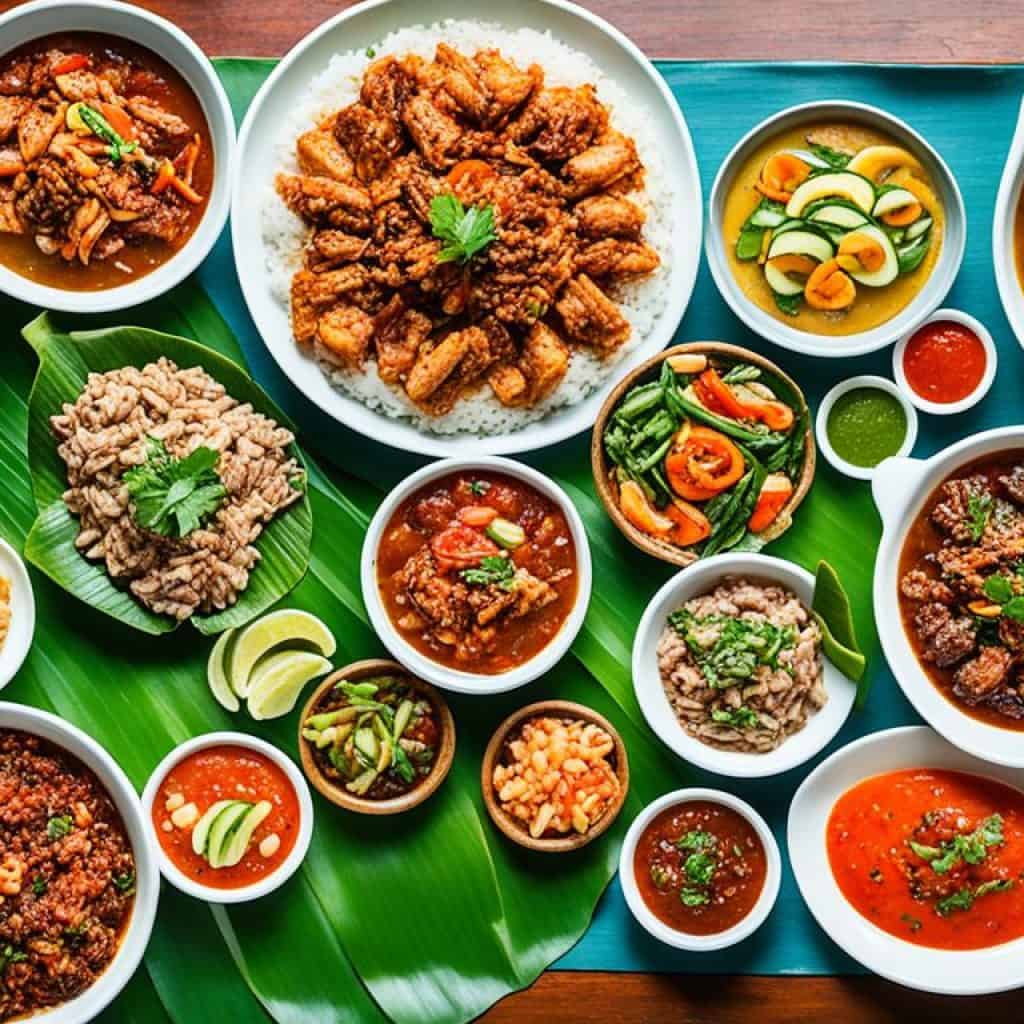
Planning Your Itinerary in the Philippines
Planning your travel itinerary in the Philippines can be an exciting and overwhelming task. With so many stunning destinations and diverse experiences to choose from, it’s important to carefully plan your trip to make the most of your time and budget. Here are some essential tips to help you create a memorable itinerary:
1. Book your flights in advance:
When it comes to booking flights for your Philippines adventure, it’s best to do so in advance. This can help you secure better prices and availability, ensuring a smoother travel experience. Look for airlines that offer direct flights to your desired destinations and consider flexible dates to find the best deals.
2. Choose accommodations based on your preferences:
Accommodation choices in the Philippines range from budget-friendly hostels to luxury resorts, giving you plenty of options to suit your preferences and budget. Whether you prefer beachfront villas, cozy guesthouses, or city center hotels, research and choose accommodations that align with your travel style and priorities.
3. Consider tour packages:
To simplify your travel experience and ensure you don’t miss out on top attractions, consider opting for tour packages. These packages often include transportation, accommodations, and guided tours, offering convenience and a curated itinerary. Choose packages that align with your interests, whether it’s island hopping, cultural exploration, or adventure activities.
“Planning your itinerary in the Philippines allows you to make the most of your travel experience, ensuring you visit the destinations that excite you the most and participate in activities that align with your interests.”
By carefully planning your itinerary, booking flights in advance, choosing accommodations that suit your preferences, and considering tour packages, you can create a well-structured and enjoyable trip to the Philippines. Remember to be flexible and open to new experiences, as the country’s beauty and cultural richness will surely captivate you.
Cultural Etiquette in the Philippines
When visiting the Philippines, it is essential to show cultural respect and practice politeness to ensure a positive experience. The Filipino people take great pride in their customs and traditions, and by embracing them, you can develop deeper connections and gain a better understanding of the local culture.
One important aspect of cultural respect is to dress appropriately, especially when visiting religious sites or attending formal events. Modest attire is generally preferred, avoiding revealing or skimpy clothing. Wearing conservative outfits shows respect for the local customs and helps maintain a harmonious atmosphere.
Politeness is deeply ingrained in Filipino culture, and being courteous and respectful to others is highly valued. It is customary to greet people with a warm smile and a friendly “Mabuhay!” (meaning “Welcome” in Filipino). Saying “please” (“pakiusap”) and “thank you” (“salamat”) in Filipino is greatly appreciated and goes a long way in establishing positive interactions.
“Respect for elders is an integral part of Filipino culture. When addressing older individuals, it is polite to add “po” to your sentences. For example, saying “Salamat po” instead of just “salamat” shows respect.”
Engaging with locals and learning from them is an excellent way to gain insights into their way of life. Filipinos are known for their hospitality and warm nature, and they are often eager to share their traditions and stories with visitors. Being open-minded and showing genuine curiosity can lead to memorable experiences and foster cultural understanding.
Local Customs and Traditions
The Philippines is a culturally diverse country, with various ethnic groups and distinct traditions. Some notable local customs include:
- Respecting elders: Filipinos have a strong sense of familial respect and honor.
- Pasalubong: Bringing gifts (“pasalubong”) when visiting someone’s home is a common tradition to show appreciation and hospitality.
- Mano po: It is customary to show respect to older family members by taking their hand and lightly pressing it to one’s forehead.
- Bahala na attitude: Filipinos often embrace a “bahala na” attitude, meaning “come what may,” reflecting their positive and adaptable nature.
By embracing these customs and traditions, you can actively participate in the local culture and build meaningful connections during your visit to the Philippines.
| Custom | Description |
|---|---|
| Dress Code | Wear modest clothing, especially when visiting religious sites or attending formal events. |
| Politeness | Show respect by using polite language, such as saying “please” and “thank you”. |
| Respecting Elders | Address older individuals with “po” and show deference to their wisdom and experience. |
| Engaging with Locals | Learn from and interact with local Filipinos to gain cultural insights and deepen your connections. |
| Local Customs | Respect and participate in customs such as respecting elders, bringing pasalubong, practicing mano po, and embracing the “bahala na” attitude. |
Tips for a Memorable Trip in the Philippines
To make your trip in the Philippines truly memorable, there are a few key factors to consider. The country offers a wealth of diverse attractions and experiences, and by embracing these tips, you can enhance your journey and create unforgettable memories.
1. Flexibility
One of the secrets to a memorable trip in the Philippines is to be flexible in your plans. While it’s important to have a general itinerary, leave room for spontaneity and unexpected discoveries. The country is known for its stunning landscapes and hidden gems, so be open to deviating from your original plan and exploring off-the-beaten-path destinations. Flexibility allows you to fully embrace the beauty and serendipity of the Philippines.
2. Local Interaction
Interacting with locals is a wonderful way to immerse yourself in the vibrant Filipino culture and make lasting connections. Engage in conversations, ask for recommendations, and participate in local activities or festivals. The warmth and friendliness of the Filipino people will enrich your travel experience and provide unique insights into the culture and way of life. Whether it’s learning traditional dances, cooking local dishes, or simply chatting with locals, local interaction adds depth and authenticity to your trip.
3. Responsible Tourism
When traveling in the Philippines, it’s important to practice responsible tourism. Respect the environment by disposing of waste properly, avoiding single-use plastics, and supporting eco-friendly initiatives. Show respect for local customs and traditions, and be mindful of cultural sensitivities. Contribute positively to local communities by supporting local businesses, artisans, and sustainable tourism projects. By being a responsible traveler, you can help preserve the natural beauty and cultural heritage of the Philippines for future generations.
4. Documentation
Prior to your trip, ensure that you have all the necessary documentation in order. Check the visa requirements for your country and make sure your passport is valid for at least six months beyond your intended stay. It’s also advisable to carry printed or digital copies of important documents such as your passport, travel insurance, and accommodation reservations. Having proper documentation gives you peace of mind and allows for smooth travels throughout your trip.
By following these tips for a memorable trip in the Philippines, you can fully embrace the beauty and diversity of this captivating country. Stay flexible, engage with locals, practice responsible tourism, and ensure you have all the necessary documentation. These simple steps will help you create unforgettable experiences and memories that will last a lifetime.
Unlocking the Beauty of the Philippines
The Philippines is a captivating destination that boasts stunning landscapes, a rich culture, and warm hospitality. Travelers are drawn to its beautiful beaches, historic sites, and unique natural wonders, creating unforgettable experiences.
Stunning Landscapes
The Philippines is blessed with breathtaking landscapes that will leave you in awe. From the mesmerizing Chocolate Hills in Bohol to the picturesque rice terraces in Ifugao, the country offers a diverse range of natural wonders to explore. Hike through lush rainforests, swim in crystal-clear turquoise waters, and marvel at dramatic waterfalls. Whether you’re an adventure enthusiast or a nature lover, the stunning landscapes of the Philippines will take your breath away.
Rich Culture
The Philippines is renowned for its vibrant and diverse culture. Immerse yourself in the colorful festivals celebrated throughout the country, such as the Sinulog Festival in Cebu and the Ati-Atihan Festival in Kalibo. Experience the warm hospitality of the Filipino people and discover their rich traditions and customs. Delve into the fascinating history by visiting historical sites like the Intramuros in Manila and the Spanish colonial structures in Vigan. From the arts and crafts to the traditional music and dance, the Philippines offers a cultural experience like no other.
A Culinary Delight
The Philippines is a food lover’s paradise, with a wide array of delicious and diverse cuisines. Indulge in classic Filipino dishes such as adobo, sinigang, and lechon. Sample the vibrant street food scene, where you can savor skewered barbecue, balut (a popular Filipino delicacy), and halo-halo (a refreshing dessert). Don’t miss the opportunity to try the exotic tropical fruits like mangoes, coconuts, and durian. The culinary journey in the Philippines will tantalize your taste buds and leave you craving for more.
“The Philippines is a captivating destination that offers stunning landscapes, a rich culture, and warm hospitality.”
With its stunning landscapes, rich culture, and mouthwatering cuisine, the Philippines is truly a destination that should be on every traveler’s bucket list. Whether you’re seeking adventure, relaxation, or cultural immersion, the Philippines has something for everyone. Unlock the beauty of this remarkable country and create memories that will last a lifetime.
| What to Expect in the Philippines | Why Visit? |
|---|---|
| Stunning landscapes | Experience the breathtaking beauty of the Chocolate Hills, rice terraces, and more |
| Rich culture | Immerse yourself in vibrant festivals, warm hospitality, and fascinating traditions |
| Culinary delight | Indulge in mouthwatering Filipino dishes and exotic tropical fruits |
Conclusion
The Pinay Wise Philippines Tourist Guide is your go-to resource for Pinay travelers looking to travel smart and safe in the Philippines. With valuable tips and advice, this guide empowers you to make informed decisions and have an unforgettable experience in this diverse and captivating destination.
By following the Pinay Wise Tourist Guide, you can explore the stunning landscapes, rich culture, and warm hospitality that the Philippines has to offer. From the breathtaking beaches to the vibrant festivals and delicious cuisine, the Philippines provides endless opportunities for adventure and discovery.
Remember to prioritize safety during your trip by staying aware of your surroundings, avoiding the far south, and taking necessary precautions. With the Pinay Wise Tourist Guide, you can confidently navigate the intricacies of travel, ensuring a smooth and enjoyable journey.
So, get ready to embark on your Pinay Wise adventure and create lifelong memories as you explore the beauty of the Philippines. Travel smart, travel safe, and let the Pinay Wise Philippines Tourist Guide be your trusted companion along the way.
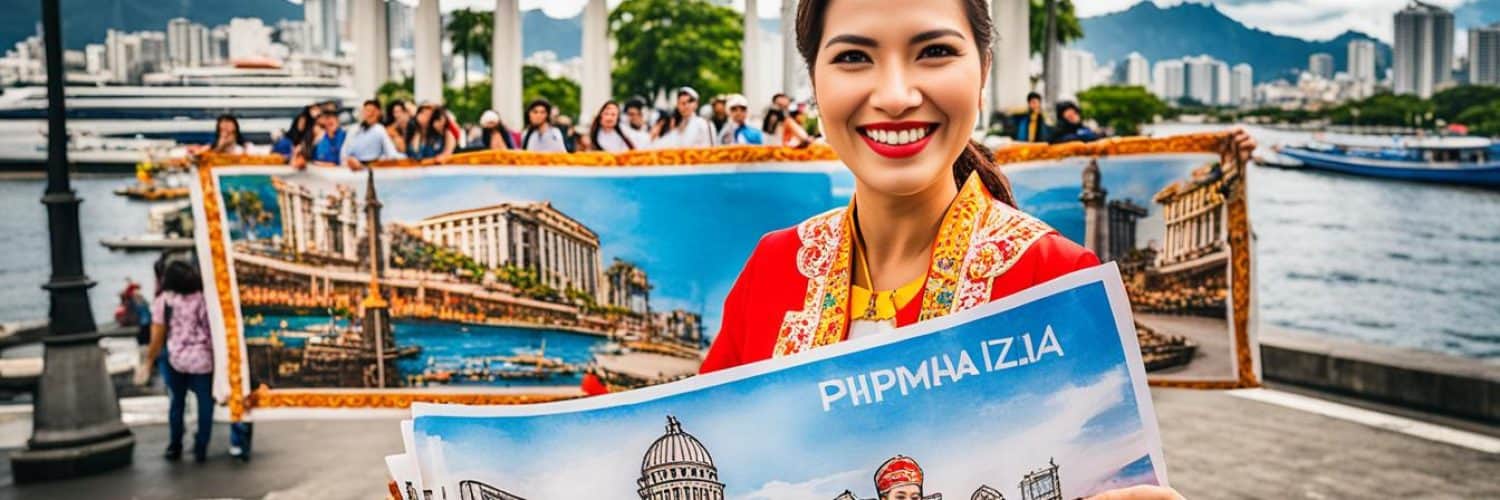
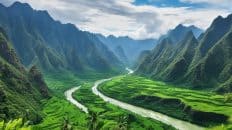
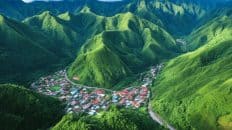
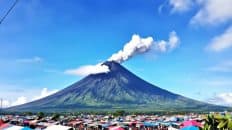













Add comment